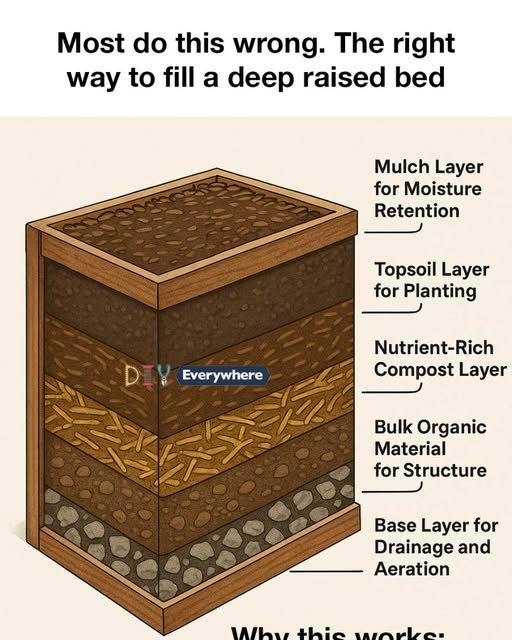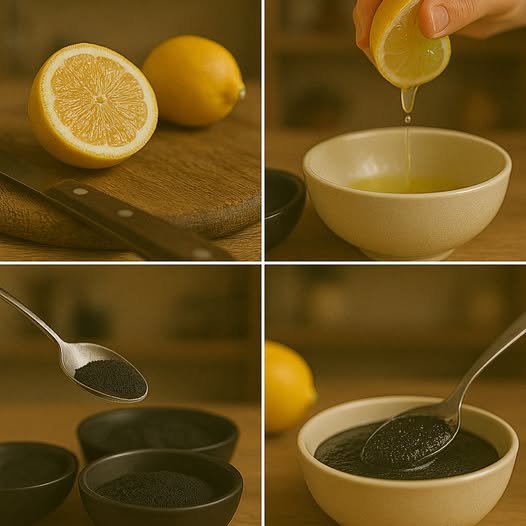Raised beds offer numerous benefits for gardeners, including improved soil quality, better drainage, and easier access. However, the way you fill a deep raised bed can significantly impact its performance. Properly filling a raised bed ensures that plants have the right environment to thrive, with adequate nutrients, drainage, and aeration. Understanding the layers and materials needed can make the difference between a flourishing garden and one that struggles.
Common Mistakes in Filling Raised Beds
One of the most common mistakes gardeners make is using only topsoil or garden soil to fill their raised beds. This can lead to poor drainage, compaction, and nutrient imbalances. Another mistake is not considering the depth of the bed and the needs of the plants being grown. Overfilling with heavy materials can also cause the bed to settle unevenly, affecting plant growth. Additionally, neglecting to layer materials properly can result in poor root development and reduced yields.
Benefits of Correctly Layering a Raised Bed
Correctly layering a raised bed creates an optimal environment for plant growth. It ensures good drainage, prevents soil compaction, and provides a steady supply of nutrients. A well-layered bed also encourages beneficial microbial activity, which is essential for healthy soil. By using a variety of materials, gardeners can create a balanced ecosystem that supports robust plant growth and reduces the need for chemical fertilizers.
Step-by-Step Guide to Filling a Deep Raised Bed
Filling a deep raised bed involves several key steps. Start by selecting the right location and preparing the base. Then, layer materials in a specific order to ensure proper drainage, aeration, and nutrient availability. Each layer serves a distinct purpose, from providing structure to retaining moisture. By following these steps, gardeners can create a thriving environment for their plants.
Layer 1: Base Layer for Drainage and Aeration
The first layer should consist of coarse materials such as gravel, stones, or broken bricks. This layer, about 4-6 inches deep, provides excellent drainage and prevents water from pooling at the bottom of the bed. It also allows air to circulate, which is crucial for root health. This foundational layer helps prevent waterlogging and root rot, ensuring that plants have the best start.
Layer 2: Bulk Organic Material for Structure
The second layer should be made up of bulk organic materials like straw, leaves, or small branches. This layer, about 6-12 inches deep, provides structure and helps improve soil aeration. As these materials decompose, they enrich the soil with organic matter, improving its texture and fertility. This layer acts as a buffer, preventing the soil from compacting and allowing roots to penetrate easily.
Layer 3: Nutrient-Rich Compost Layer
The third layer is a nutrient-rich compost layer, about 6-8 inches deep. Compost provides essential nutrients and supports microbial activity, which is vital for plant health. This layer should be well-decomposed to ensure that nutrients are readily available to plants. Compost also improves soil structure, helping retain moisture while allowing excess water to drain away.
Layer 4: Topsoil Layer for Planting
The topsoil layer is where most of the planting occurs. This layer should be about 6-8 inches deep and consist of high-quality topsoil mixed with additional compost. This combination provides a nutrient-rich environment for seedlings and young plants. The topsoil layer should be loose and friable, allowing roots to grow freely and access the nutrients they need.
Layer 5: Mulch Layer for Moisture Retention
The final layer is a mulch layer, about 2-3 inches deep, made from organic materials such as straw, wood chips, or shredded leaves. Mulch helps retain moisture, suppress weeds, and regulate soil temperature. It also gradually breaks down, adding organic matter to the soil. This protective layer reduces evaporation and keeps the soil consistently moist, which is essential for healthy plant growth.
Conclusion: Ensuring Long-Term Success with Your Raised Bed
By following these steps and properly layering materials, gardeners can ensure long-term success with their raised beds. A well-prepared bed provides the ideal environment for plants to thrive, reducing the need for additional fertilizers and interventions. Regular maintenance, such as adding compost and refreshing mulch, will keep the bed productive for years to come. With the right approach, a deep raised bed can be a bountiful and sustainable addition to any garden.



